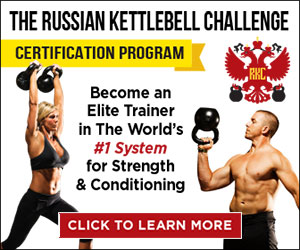“A job worth doing is worth doing well” – English Proverb
“UGH! Do it #&^!ing RIGHT!!!” -Anonymous Friend 1999
Anyone who has trained with me knows – I am a STICKLER for correct exercise form – with everything, even simple exercises at boot camp (which annoys a few people… sorry but you’re NOT injuring yourself on my watch), but especially with kettlebell training. For one – performing and practicing the exercises correctly is safer and more beneficial to you, especially in the long term. Most of what people do daily in terms of movement seems to be habitually based – usually unconscious.
One of the first things we learn with RKC style kettlebell training is the INSTANT you touch that kettlebell, you need to keep your abs tight – to support and protect your back. Even if the kettlebell you’re about to pick up is “only” 8KG (approx 18lbs), you need to act as though it’s a 48Kg (106lb) Dragon Door “Beast”. Besides, I can think of 3 heavy lifting guys off the top of my head, who after deadlifting the basic equivalent of a small car will go home, drop a small item on the floor, pick it up in a sloppy way and end up injuring themselves. It’s a sad thing to see, and totally preventable had they been paying attention.
When someone just mindlessly cranks out bad reps of any exercise, each one of those sloppy reps sets a mental/neurological/physical precedent (yes I was supposed to go to law school at one point) for future movements – building a habit so to speak. Your body is learning to repeat that bad rep over and over again*. As everyone knows, un-learning is always harder than just learning the right way first. If you are wanting to learn kettlebell technique, please seek out a qualified RKC certified instructor to get you started on the right track – DON’T think you can just go and “learn it from youtube.”
One of the reasons that yoga, tai chi, qigong, kung fu enthusiasts take to kettlebell training so well is that they’ve already learned concepts of self-awareness or mindfulness. When first learning to use kettlebells, I was really reminded of learning certain tai chi forms for the first time – reviewing where and when which part of me was supposed to be here or there, when and where to exert force, how to synchronize breath with the movements. There’s a LOT of similarity – speed of movement may be different, but the ideas of intention, transferring kinetic and other forms of energy is very much the same.
At the RKC certification (and all throughout the amazing RKC Instructor manual) we are constantly reminded to focus INTERNALLY (so very much like martial arts) when practicing our exercises. For example, with the kettlebell press – once again the focus is NOT on the kettlebell, but on what we are doing with our bodies – what is tensed? Where are we leaking energy or strength? Are we fully supporting ourselves in this movement? When and where to breathe? When someone is just mindlessly sloppily attempting to knock out rep after messy rep – they are basically missing the whole point, accomplishing just a fraction of the benefit they could get from the same time expenditure. Not to mention the potential safety issues they may have from absent-minded training. This is why training with solid concentration, correct biomechanical breathing (more on this in later articles), and an internal focus is so crucial.
Kettlebell training practiced in the RKC is considered a “hard style” (as opposed to soft style like in tai chi) of training like karate. The RKC style, with its origins in 1980s Soviet Special Operations was developed to support their specialized karate-based hand to hand combat style. The production of power and focus of power are very evident in the properly performed kettlebell swing. A controlled, explosive hip snap should be done with maximum power very quickly. The breath synchronized and supporting of the movement, and the rhythm of contract/relax strong and certain. None of this happens without practice, focus, conscious effort. The kettlebell should never be just slung around as you see on certain tv programs. Presence, focus, control are all required.
Similar to martial arts practice, the basic kettlebell exercises should be constantly revisited, refined, and further studied.
Habitual movements create patterns not unlike the wrinkles we get from repeated facial expressions over years and years time.
Something I have noticed with clients and people in general, is that their movements, habits, expressions, and manners of eating are literally inscribed on their bodies over time (sometimes in such a harmful way as to recall Kafka’s horrifying “Penal Colony” apparatus). So taking stock of what one does every day shouldn’t be considered silly, it may very well be essential to maintaining health. Be present in your practice – every swing, and make corrections as necessary. So many times if something “feels weird” I will stop, reassess and sometimes video the next few reps. If it still feels strange, I make an appointment with my strength coach, RKCII Tim Shuman – getting someone else to watch you is invaluable!
*This argument has also been used to support NOT training to failure. Pavel has a great article on this subject, summarized with the idea that you don’t want to teach your body to fail, you want to teach it success.






Leave a Reply